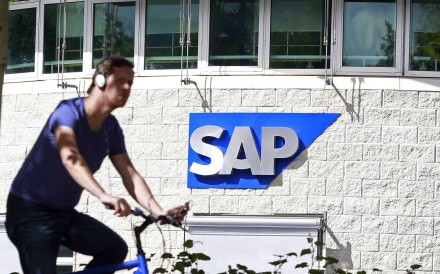Shoppers want it all, and they want it now. They want to shop seamlessly across devices, anywhere and anytime. They want online visibility into product inventory, store-based fulfillment of web orders and a range of delivery and pickup options. They want personalized offers when they’re in stores, and additional incentives when they’re nearby. And because they no longer see any distinction between the online and offline retail realms, they want merchants to see the world the exact same way.
Only 21% of retail executives surveyed at April’s World Retail Congress 2016 event told McKinsey/Periscope researchers they are more confident now than a year ago about their company’s ability to deliver omnichannel services, while 45% said their efforts are not advancing fast enough. Just 6% of survey respondents described their omnichannel readiness as “Excellent—fully implemented,” while 36% said their companies are still mired in the dreaded “Testing a proof of concept” stage.
“I don’t think anyone has really nailed [omnichannel] yet,” Ken Sickles, vice president of product strategy at product data management company 1WorldSync, told Retail Dive. “Everyone is experimenting. The pure-plays are doing it better than anyone else, and everyone is playing catch-up with Amazon. But no one is doing it that well.”
Experts argue that’s because retailers are making strategic errors across virtually all phases of their omnichannel initiatives.
“Any omnichannel effort has to be designed around the user,” Sickles said. “It means the user’s got to be able to move easily from one channel to the next, because as consumers, we don’t think of them as different channels. The very name ‘omnichannel’ almost implies that a lot of retailers don’t quite understand it.”
The seams are showing
Contrary to popular belief, the omnichannel shopping age did not begin with the June 29, 2007 launch of Apple’s revolutionary iPhone. In a nine-part blog series titled “The History of Omni-Channel,” Retail Systems Research Managing Partner Nikki Baird instead cites electronics retailer Best Buy’s 2003 ‘Customer Centricity’ campaign as the big bang moment that galvanized omnichannel’s evolution.
“Online was going to become more important to consumers, and not just as a virtual store,”
Baird wrote. “In order to be successful in that new world, Best Buy was going to have to be more flexible. And that was where Customer Centricity was born—in a cradle of cross-channel commerce … [Best Buy] envisioned a future where the customer is at the center of the enterprise, and everything that the retailer does is (forgive the tech terminology) component-ized, so that a customer could essentially build their own path to purchase by assembling from the various product and service offerings that Best Buy offered. And they viewed that path to purchase as everything from researching products to post-sales service and support.”
Baird goes on to call the iPhone’s introduction a “non-event” for retail. “I mean, sure, retailers scrambled to figure out what it would mean for them, etc., etc., but in the end, in 2007, the net impact of the iPhone on shopping behavior was zero,” she wrote. “It was too soon to tell.”
Nearly a decade following the iPhone’s debut, retailers recognize mobile’s massive impact on shopping behavior, but they’re still scrambling to understand and leverage the opportunities it presents.
“[Retailers are] not fundamentally very well organized to attack mobile,” Raj Aggarwal, co-founder and CEO of mobile engagement platform Localytics,
told Retail Dive. “What I mean by that is mobile is a channel that enables so many opportunities. Unlike the web, which is one-way, one-directional, static delivery of content, mobile creates the ability to have bi-directional communication with the user—a dynamic experience, an interactive experience … Most retailer providers are thinking of [mobile] as just an extension of the web. And it’s not.”
The problem is that most retailers still lack the insights and tools necessary to transform that behavior from browsing to buying. When asked by Periscope to identify the top three challenges hampering their omnichannel strategies, 67% of retail execs cited a lack of customer analytics across channels, 48% blamed silos within the organization, 45% pointed to poor data quality and another 45% confessed to an inability to identify customers across shopping trips.
“Consumers want to be able to have a seamless experience, and retailers continue to struggle with that,” Natalie Kotlyar, partner in consulting firm
BDO USA’s Consumer Business practice, told Retail Dive. “I don't think they realize just how important that seamless experience between brick-and-mortar, mobile and e-com is to the consumer. They need a deeper understanding of those customers, and they need investment into the technology that will make it happen.”
Information and inspiration
Understanding omnichannel starts with data—both private, in-house customer data as well as social media insights and other public information—that enables retailers to uniquely identify customers and products across channels, shedding light on their activities and preferences. Sources of that data range from customer account profiles to location technologies like beacons and geo-fences, according to Thaise Skogstad, director of product marketing at customer engagement platform Phunware.
“Through the power of location, we’re able to see what each user ID looks at, what they’re interested in buying, what they’re reading about on social media,” Skogstad told Retail Dive. “Retailers must benefit from this digital trail. As of today, 90% of traffic in mobile happens with apps. If retailers don’t pay attention to that and don’t take advantage of the data that’s shared, they’re going to be missing out big time.”
The more retailers know about their customers, the more effectively they can customize promotions across channels, drive brand awareness and loyalty, and boost customer retention throughout the shopping cycle.
“It’s about using everything you know about the user to give them more,” Localytics' Aggarwal said. “If you’re a pharmacy, for example, you tell them when their prescription is ready and when to pick it up. If you’re a retailer, let them know for the things they’re interested in when there’s a sale. Maybe it’s a sale in proximity to where they already are.”
Capturing and parsing customer data goes beyond investment in technology, however. It also demands dramatic organizational changes. Retailers must not only eliminate silos, but also create new processes and teams that operate across—not just within—channels. Some forward-thinking organizations are completely overhauling their sales and marketing departments, forging unified staffs and systems that span all platforms.
“Systems need to be able to communicate across the different channels,” 1WorldSync's Sickles said. “A lot of retailers are challenged there, because they thought of these channels as unique and individual propositions for so long. Those silos are holding a lot of retailers back.”
They’re also hindering the customer experience. Aggarwal stresses the importance of sharing data between channels to engage consumers, not enrage them—for example, by determining whether a customer has recently received an email promotion before sending similar push notifications to their smartphone.
“If you don’t have that context, you’re going to annoy your users and you’re going to drive them away,” Aggarwal said. “So it’s about getting that understanding of the user, the context of what they’re doing, and every way they’re touching you.”
But omnichannel isn’t just about the digital customer experience, for that matter. It’s about satisfying customers in brick-and-mortar stores as well. Let's not forget that retailers with a physical presence still capture around 90% of all sales.
While some shoppers look at retail stores simply as a destination for showrooming (i.e., checking out merchandise up close, then finding cheaper competitor prices via smartphone), others are visiting brick-and-mortar locations to retrieve items purchased online or to solicit tips and recommendations from sales associates. Some retailers are reimagining the traditional physical retail experience altogether, bringing in dining and entertainment options, compelling brand partners and interactive technologies to lure shoppers craving alternatives.
Heads in the clouds
Innovation is central to omnichannel success. But retailers must first address the fundamentals before they start thinking big.
“[Omnichannel] starts with infrastructure. You have to have the right infrastructure in place,” Sickles said. “Think about the experience you want to support for your customer. That will drive you to what your infrastructure needs to look like. We’re all consumers, yet it seems difficult for a lot of traditional retailers to understand how a consumer wants to behave. Then you’ve got to get your infrastructure in place, from your systems to your content to your processes. All of those things have to be in place, and they have to work across your organization, and all of the different channels you’re going to support.”
Retailers must embrace new technological approaches and philosophies—for example, the cloud. Just this month, scented candle retailer Yankee Candle announced it is partnering with commerce platform Aptos to
shift its omnichannel operations to the cloud, a move to identify, profile and segment each individual customer and create personalized, consistent shopper experiences and promotions across channels.
Yankee Candle is lighting a path that other retailers should follow, according to1WorldSync's Sickles.
“One of the things holding [retailers] back is the old-school mindset around the technology they use,” he said. “We see a lot of larger companies hesitating—for whatever reason—to move into the cloud. It is the perfect mechanism to support true omnichannel. By putting all the content you need in the cloud, now it’s immediately available to any application, whether it’s a bot on a messaging platform to Siri with Apple to your website to your mobile app. That removes a lot of the friction retailers are experiencing today. But they still tend to believe that they need to
own the stack.”
Retailers who continue to hesitate may be lost. Forrester Research projects mobile commerce sales across the U.S. will increase at a compound annual growth rate of 17% over the remainder of the decade,
accounting for 49% of overall e-commerce by 2020 and driving $252 billion in annual sales. Retailers must either solve the mobile riddle and accommodate shoppers across all channels, or make way for more nimble and progressive merchants that can.
“Everything you do today to address mobile and to address apps is what’s going to allow you to play properly in this future world where you engage with the user in multiple different ways, depending on their context and what’s easiest for them,” Aggarwal said. “What’s important today is that you get a good understanding of who your users are, and then use the channels that are available to communicate with them—to have a relationship.”







